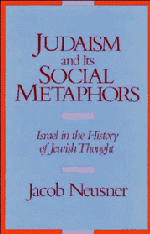Book contents
- Frontmatter
- Contents
- Preface
- List of Abbreviations
- Introduction
- 1 Imagining Society, Re-visioning “Israel”
- PART I “Israel” in the First Statement of Judaism, 70–300 C.E.
- PART II “Israel” in the Second Statement of Judaism, 300–600 C.E.
- PART III Same Metaphors, Other Systems
- General Index
- Index to Biblical and Talmudic References
- Frontmatter
- Contents
- Preface
- List of Abbreviations
- Introduction
- 1 Imagining Society, Re-visioning “Israel”
- PART I “Israel” in the First Statement of Judaism, 70–300 C.E.
- PART II “Israel” in the Second Statement of Judaism, 300–600 C.E.
- PART III Same Metaphors, Other Systems
- General Index
- Index to Biblical and Talmudic References
Summary
In this book I ask a small question about a large subject: How does a religious system bring to concrete and vivid expression a definition of those who live within that system – how does it characterize its members as a distinctive sort of social entity? In the authoritiative writings of every Judaism known in history, the term “Israel” is critical. What a Judaism means by the term entails the sort of social group it associates with “Israel” and the way it imagines and portrays “Israel.” An investigation of both aspects can provide insight into the solution of a much broader issue – the relationship, in the formation of a religious system, between circumstance and context, social facts and the social imagination.
By religious system I mean a cogent composition of three things: a worldview, a way of life, and an address to a defined entity. A religious system addresses a group of people with an account of a worldview, a way of life, and a theory about the social entity constituted by the group of people at hand. The ethos, ethics, and social theory all together raise a fundamental and urgent question and then answer that question with a cogent and (to the system's framers) self-evidently valid statement. This study considers how a Judaic system (or “a Judaism”) explained the social entity to which that system addressed itself, how in context it gave an account of what an “Israel” is.
- Type
- Chapter
- Information
- Judaism and its Social MetaphorsIsrael in the History of Jewish Thought, pp. xi - xiiiPublisher: Cambridge University PressPrint publication year: 1989



